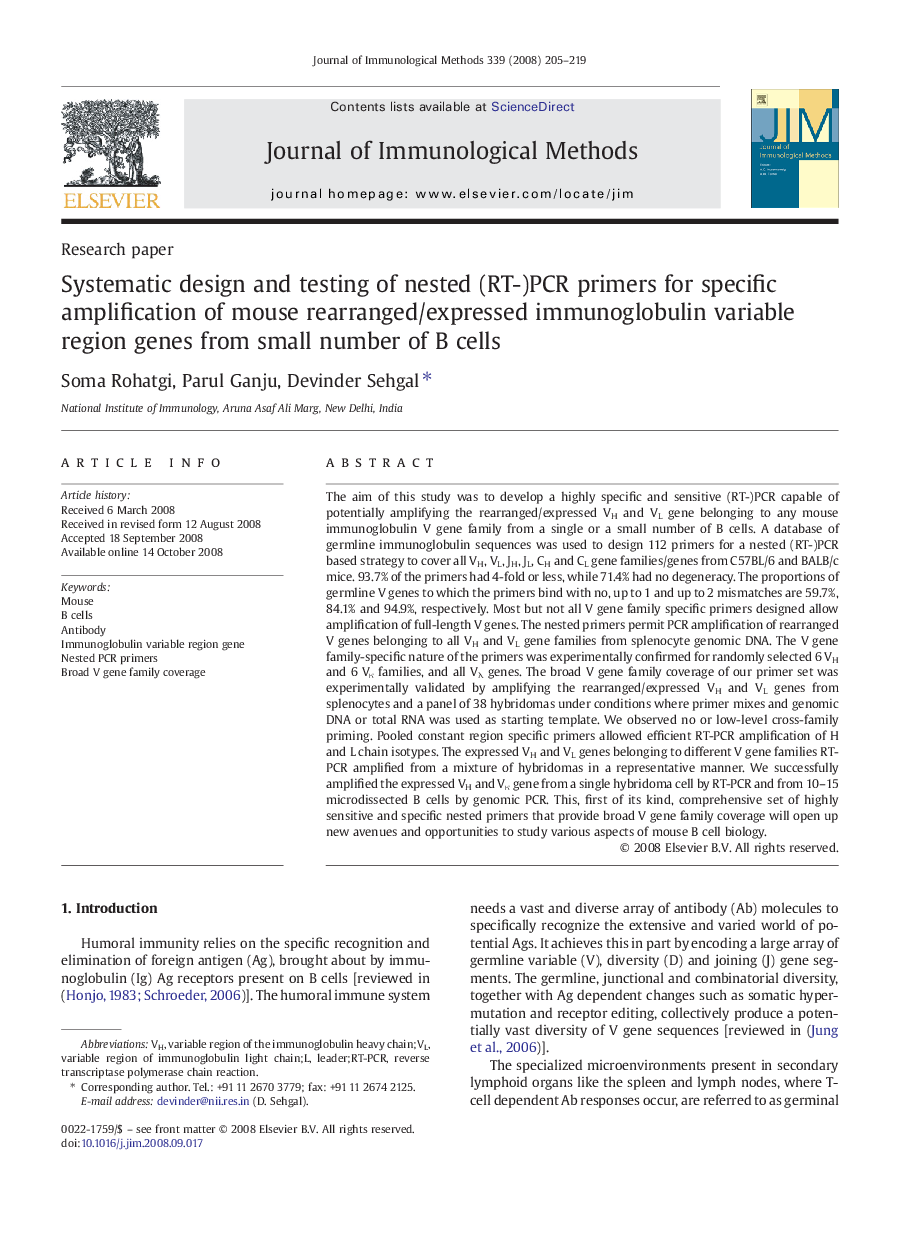| Article ID | Journal | Published Year | Pages | File Type |
|---|---|---|---|---|
| 10889353 | Journal of Immunological Methods | 2008 | 15 Pages |
Abstract
The aim of this study was to develop a highly specific and sensitive (RT-)PCR capable of potentially amplifying the rearranged/expressed VH and VL gene belonging to any mouse immunoglobulin V gene family from a single or a small number of B cells. A database of germline immunoglobulin sequences was used to design 112 primers for a nested (RT-)PCR based strategy to cover all VH, VL, JH, JL, CH and CL gene families/genes from C57BL/6 and BALB/c mice. 93.7% of the primers had 4-fold or less, while 71.4% had no degeneracy. The proportions of germline V genes to which the primers bind with no, up to 1 and up to 2 mismatches are 59.7%, 84.1% and 94.9%, respectively. Most but not all V gene family specific primers designed allow amplification of full-length V genes. The nested primers permit PCR amplification of rearranged V genes belonging to all VH and VL gene families from splenocyte genomic DNA. The V gene family-specific nature of the primers was experimentally confirmed for randomly selected 6 VH and 6 Vκ families, and all Vλ genes. The broad V gene family coverage of our primer set was experimentally validated by amplifying the rearranged/expressed VH and VL genes from splenocytes and a panel of 38 hybridomas under conditions where primer mixes and genomic DNA or total RNA was used as starting template. We observed no or low-level cross-family priming. Pooled constant region specific primers allowed efficient RT-PCR amplification of H and L chain isotypes. The expressed VH and VL genes belonging to different V gene families RT-PCR amplified from a mixture of hybridomas in a representative manner. We successfully amplified the expressed VH and Vκ gene from a single hybridoma cell by RT-PCR and from 10-15 microdissected B cells by genomic PCR. This, first of its kind, comprehensive set of highly sensitive and specific nested primers that provide broad V gene family coverage will open up new avenues and opportunities to study various aspects of mouse B cell biology.
Keywords
Related Topics
Life Sciences
Biochemistry, Genetics and Molecular Biology
Biotechnology
Authors
Soma Rohatgi, Parul Ganju, Devinder Sehgal,
